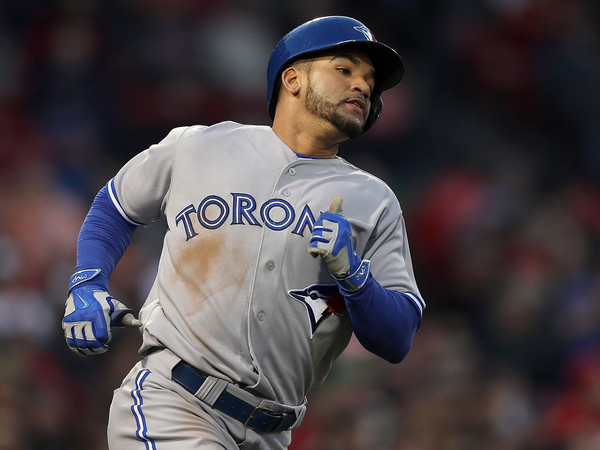Early in the 2015 season, Devon Travis looked poised to rise to the upper levels of a relatively weak second base DFS field before an injury put that temporarily on hold. Now back in the Blue Jays lineup, let’s look at the data Travis has given us so far and see how he ranks overall as a second base option in DFS.
Any time a player is coming back from an injury, I like to ask myself whether or not anything has changed with the team’s roster since the player was last in the lineup. In Travis’ case, there has been a relatively significant change, which is the team’s overall health. Whereas Travis was able to bat first or second before his injury, he is often finding himself at the bottom of the order so far in July.
Interestingly, while Travis’ numbers are decent overall, they are pretty awful when he has hit leadoff. This is even more surprising when you consider that he has the most at-bats in this position. Travis is a player who can be dangerous at the bottom of the order, but still, losing 0.8 plate appearances per game by batting eighth or ninth is something you don’t like to see.
As a right-handed bat, you would expect Travis to fare better against left-handed pitching, and he does, adding about 30 points to wOBA against left-handers. Looking at the stats on Fantasy Labs though, the results are a little surprising:
Why are his splits like this? Honestly, small sample size definitely has something to do with it. Still, Travis has had some pretty big games against righties…all of his big games, in fact. A Plus/Minus of +2.83 is probably unsustainable for him, but I wouldn’t be surprised if he stays squarely in the green against righties. I’d also expect Travis’ Plus/Minus vs lefty numbers to shoot up as the sample size increases, especially since he plays for one of the best, if not the best, lineups at hitting left-handed pitching (Toronto currently leads the league in wOBA vs L and ISO vs L).
Another interesting pattern in Travis’ game is evident in his spray chart. You’ll notice there have been basically zero base hits to left-center and left fields – only home runs to those areas. The chart to the right is even more ridiculous because it includes balls hit which results in outs. He hasn’t hit any balls to this pretty large portion of the field, period.
Travis certainly looks like a player made to play in parks with short left fields, based on the above. In fact, based on his handedness splits, which showed strong vs R numbers with vs L numbers that are likely to improve, deploying Travis in stadiums that match this criteria might be the best way to add value.





